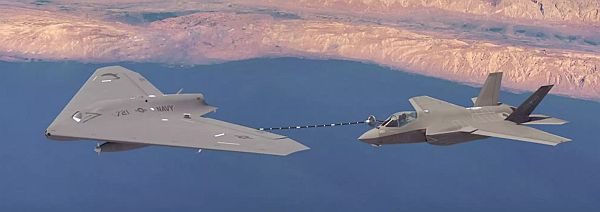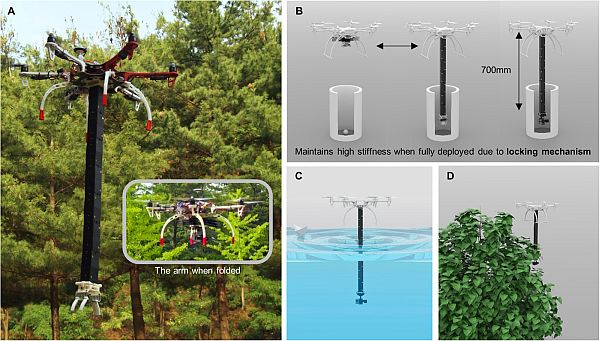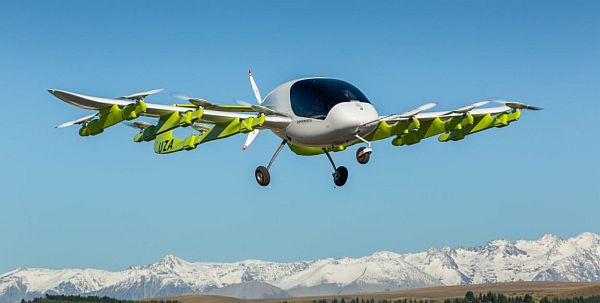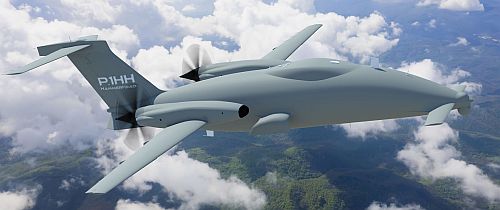Podcast: Play in new window | Download (Duration: 32:45 — 22.6MB)
Lockheed Martin’s MQ-25 Stingray concept, UTM testing, nuclear power plant inspection, pizza delivery by drone, another near-miss, Canadian drone regulations, and a new drone racing idea.
UAV News
Skunk Works Reveals Stealthy UAV Demonstrator
The Lockheed Martin Skunk Works is celebrating their 75th anniversary and they were a major sponsor at the LA County Airshow in California. Lockheed put the X-44A small UAV on static display for the public for the first time. The X-44A first flew in 2001 to test the flying-wing design.
Lockheed’s MQ-25 Tanker Drone Looks Impressive, But It’s Still Just A Paper Plane
Lockheed has unveiled its MQ-25 Stingray concept for a carrier-based unmanned tanker. Other designs were considered, but the flying-wing design had a number of advantages, including aerodynamic efficiency, greater fuel load, lower parts count and reduced footprint on carrier decks with the wingtips folded up. Later this year, the Navy will select one of the three proposed designs and award a contract for four prototype aircraft.
NASA completes the third phase of UAS airspace testing
The week-long test was conducted by the Nevada Institute for Autonomous Systems (NIAS) and NASA UTM partners, focusing on airspace management technologies for integrating UAS into the national airspace. The UTM development program is progressing through four “Technology Capability Levels,” this being the third.
Small US Built drones searching damaged Fukushima Nuclear Plant
Tests are being conducted for drones to be used for inspection and damage assessment at the Fukushima Daiichi nuclear power plant in Japan. In 2011, that facility experienced nuclear meltdowns, explosions, and the release of radioactive material following the tsunami. A team from Southwest Research Institute (SwRI) and the University of Pennsylvania GRASP Laboratory plan to use UAS technology to fly into the containment vessels. SwRI Press Release: SwRI-led team to develop drones for use in Fukushima Daiichi Nuclear Power Plant.
Exploring Nuclear Power Plants with an Autonomous UAS
HBO Used Pizza-Delivery Drones to Promote the New Season of Silicon Valley
In a promotion for the Silicon Valley television comedy series on HBO, fans could order a free pizza with a certain Tweet. In Los Angeles and San Francisco, Drone Dudes would deliver the pizzas up to a maximum of twenty in each city.
UAV regs changing – for the better
Transport Canada looks to streamline and standardize the rules for drone use. At the Unmanned Systems Canada Conference in Toronto last November, Transport Canada presented draft changes to regulations governing UAVs. Another round of draft changes are expected by the summer of 2018.
Yet another drone narrowly misses a plane – how do we fix this?
Pilots of an Air New Zealand Boeing 777-200 reported that a drone came within five meters of their airplane. Flights at the airport shut down for 30 min.
Air NZ calls for tighter regulation on UAVs after near-miss
ANZ chief operations integrity and standards officer David Morgan says, “It’s clear the time has now come for tougher deterrents for reckless drone use around airports to safeguard travellers, including imposing prison terms in the case of life-threatening incidents.”
‘Exploded’ windscreen: TV journo blames drone for plane crash
Also in New Zealand, a man says a drone hit his small plane while flying over the Western Bay. The windscreen exploded and he was forced to make a crash landing.
You’ve Never Seen a Drone Race Like This Before: Pro Aerial League’s Full Contact Championship
Recently, the Pro Aerial League held its season championship event. (The Generals won.) Watching were more than 800 live spectators and more than 45,000 online. But drone racing is difficult for spectators and Pro Aerial League has an idea where team members rotate roles over four 20 minute quarters of nonstop racing in a small 200′ by 85′ course.
AgEagle Aerial Systems Closes Merger with EnerJex; To Initiate Trading on NYSE as UAVS
AgEagle Aerial Systems, Inc. announced that it has closed its merger transaction with EnerJex Resources, Inc. under which AgEagle becomes a wholly-owned subsidiary of EnerJex Resources. EnerJex will be renamed AgEagle Aerial Systems and is now traded on the NYSE under the ticker symbol UAVS.
UAV Video of the Week
Top 10 Waterfalls of Iceland (DJI Phantom 2 and GoPro HERO3+)






